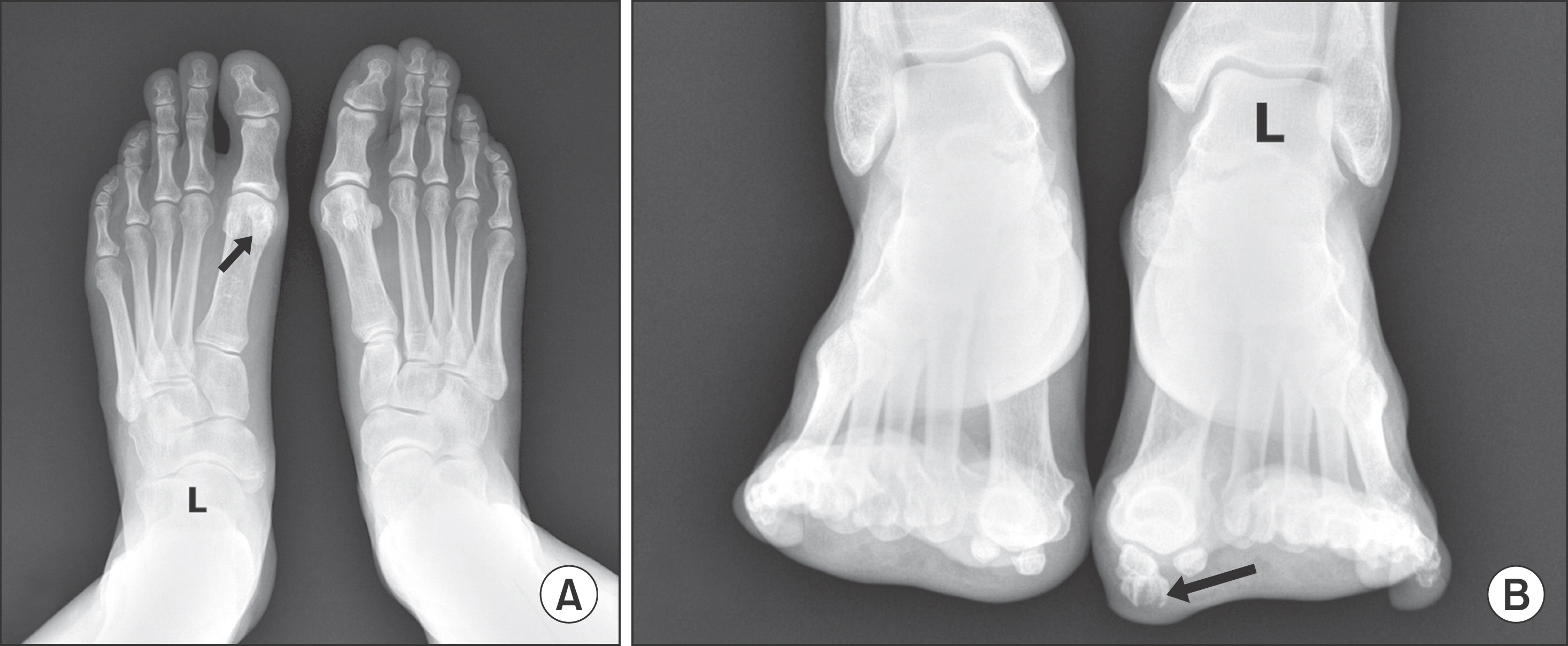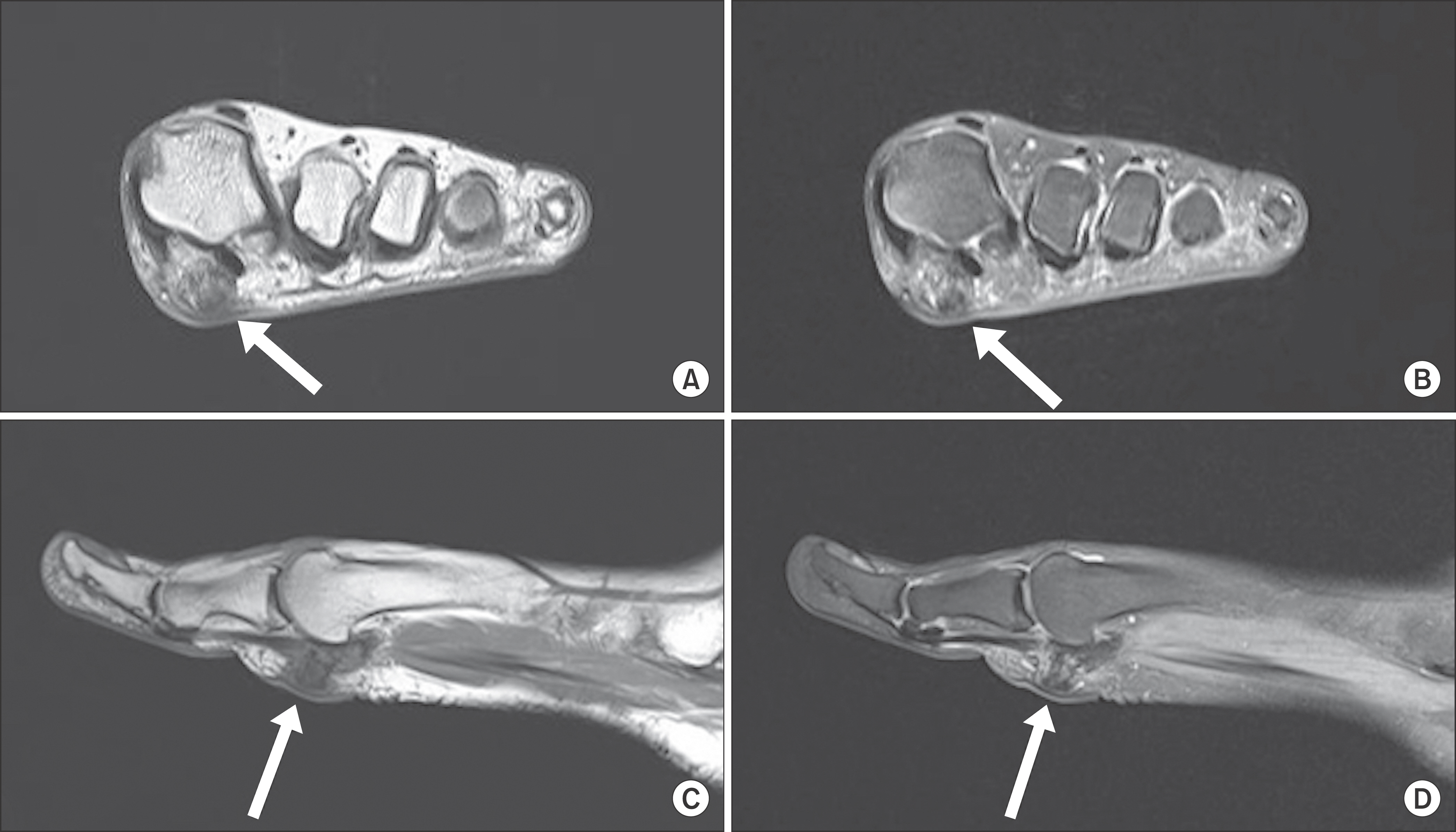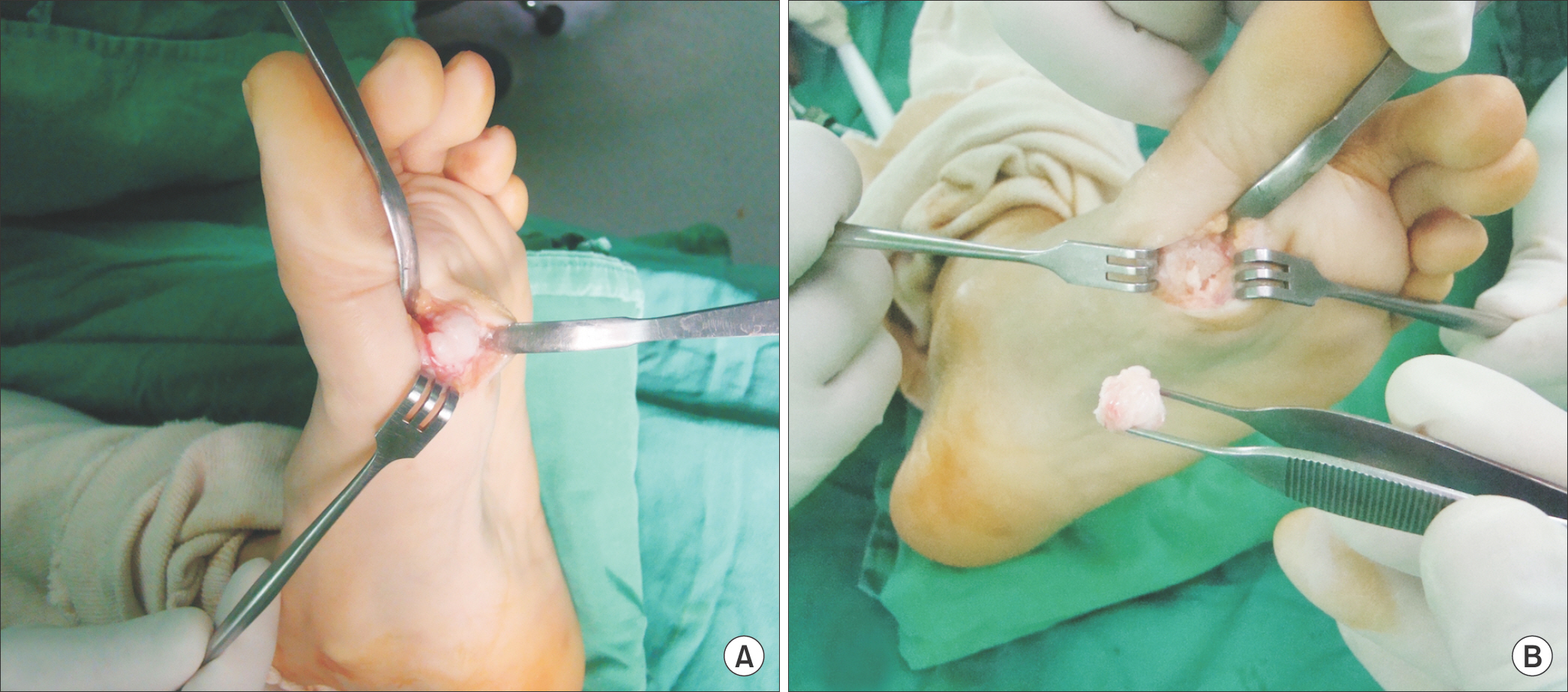J Korean Foot Ankle Soc.
2016 Sep;20(3):140-144. 10.14193/jkfas.2016.20.3.140.
Painful Osteochondroma of the Hallucal Sesamoid: A Case Report
- Affiliations
-
- 1Department of Orthopedic Surgery, Pohang St. Mary's Hospital, Pohang, Korea. kkirraa@daum.net
- KMID: 2351421
- DOI: http://doi.org/10.14193/jkfas.2016.20.3.140
Abstract
- Osteochondroma is one of the most common bone tumors. It can occur anywhere, although it is most frequent mainly around the metaphysis of long bones. Prediction sites are distal femur, proximal humerus, proximal tibia, and so on. However, osteochondroma in sesamoid is very rare. Herein, we report a case of a 56-year-old woman with symptomatic extra-articular osteochondroma in hallucal sesamoid with a brief literature review.
Keyword
Figure
Reference
-
1.Giudici MA., Moser RP Jr., Kransdorf MJ. Cartilaginous bone tu-mors. Radiol Clin North Am. 1993. 31:237–59.2.Torreggiani WC., Munk PL., Al-Ismail K., O’Connell JX., Nicolaou S., Lee MJ, et al. MR imaging features of bizarre parosteal osteochondromatous proliferation of bone (Nora’s lesion). Eur J Radiol. 2001. 40:224–31.
Article3.Greger G., Catanzariti AR. Osteochondroma: review of the lit-erature and case report. J Foot Surg. 1992. 31:298–300.4.Karasick D., Schweitzer ME., Eschelman DJ. Symptomatic osteochondromas: imaging features. AJR Am J Roentgenol. 1997. 168:1507–12.
Article5.Mowad SC Sr., Zichichi S., Mullin R. Osteochondroma of the tibial sesamoid. J Am Podiatr Med Assoc. 1995. 85:765–6.
Article6.Okada A., Hatori M., Hashimoto Y., Lee E. Painful extraskeletal osteochondroma under the tarsal sesamoid: a case report and review of literature. Eur J Orthop Surg Traumatol. 2012. 22(Suppl 1):215-220.
Article7.Nora FE., Dahlin DC., Beabout JW. Bizarre parosteal osteochondromatous proliferations of the hands and feet Am J Surg Pathol. 1983. 7:245–50.8.Lee KC., Davies AM., Cassar-Pullicino VN. Imaging the complications of osteochondromas. Clin Radiol. 2002. 57:18–28.
Article
- Full Text Links
- Actions
-
Cited
- CITED
-
- Close
- Share
- Similar articles
-
- Avascular Necrosis of the Hallucal Sesamoid: Three Cases Report
- Gout of the Hallucal Medial Sesamoid: A Case Report
- Hallux Rigidus with Osteochondroma of the Hallucal Proximal Phalanx (A Case Report)
- Symptomatic Hallucal Interphalangeal Sesamoid Bones Successfully Treated with Ultrasound-guided Injection: A Case Report
- A Case of Subungual Osteochondroma








